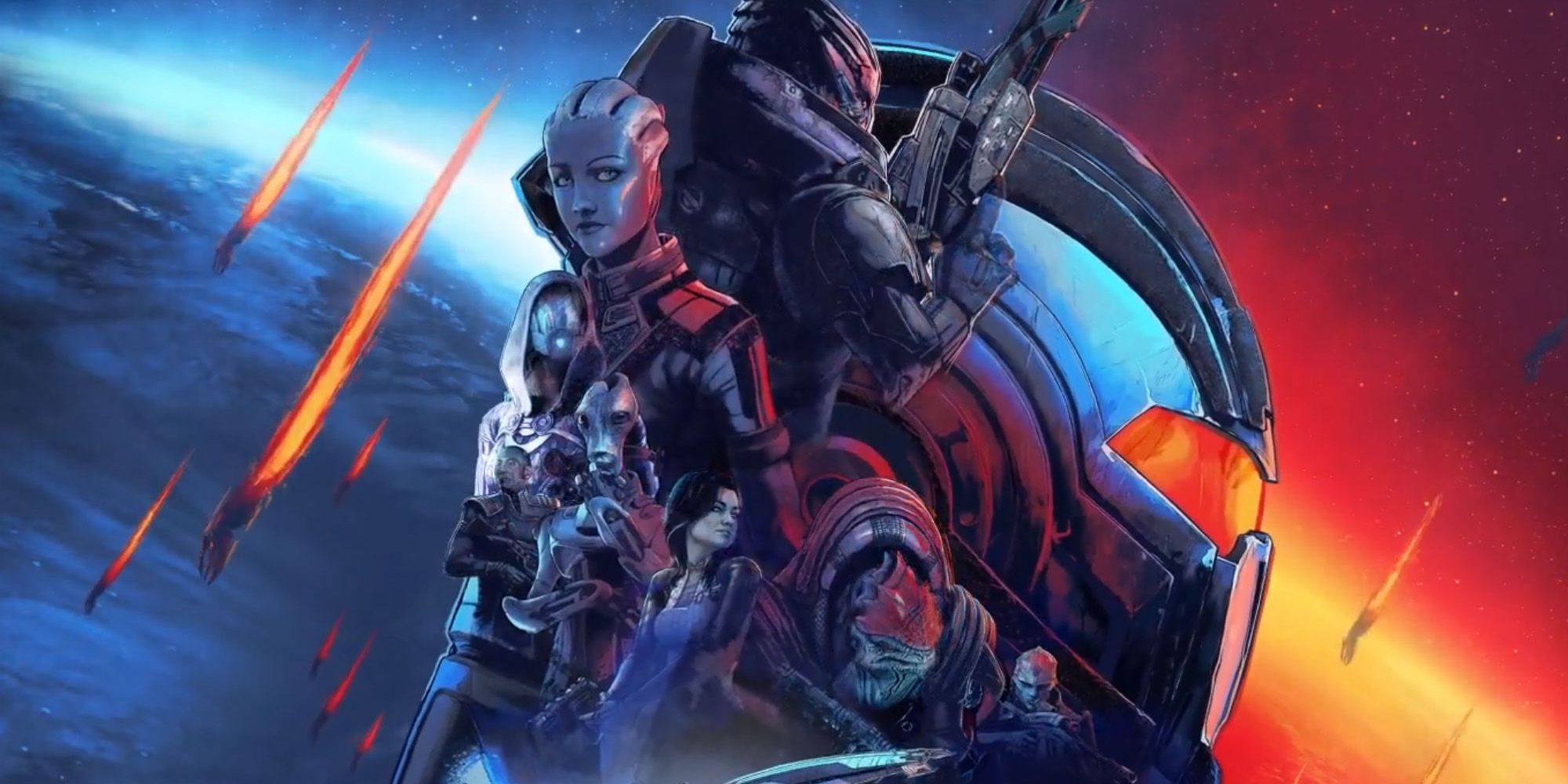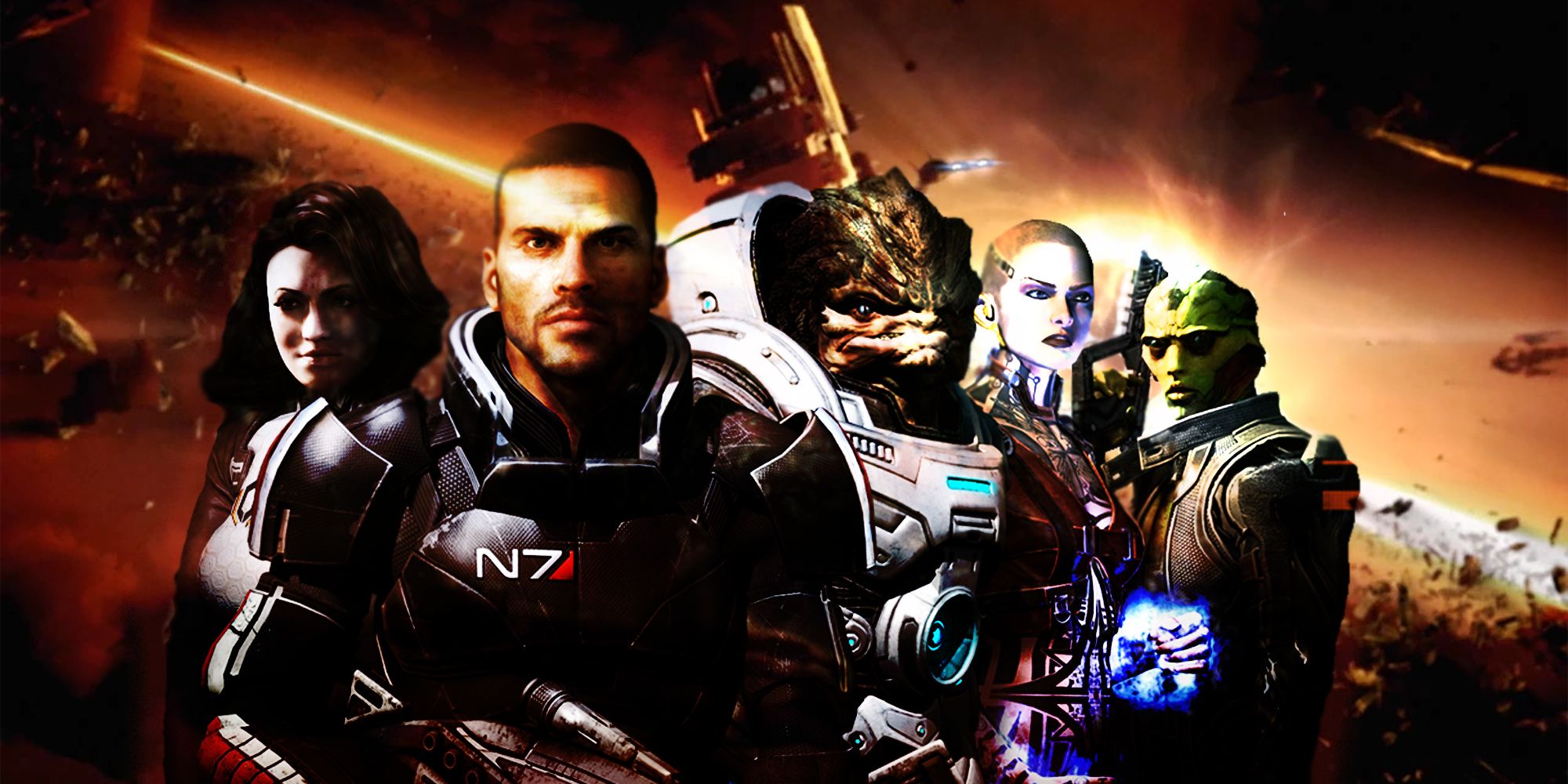One of the greatest aspects of the Mass Effect franchise is seeing how the player's choices shape the galaxy. How Commander Shepard received by others, whether or not they foster trust and hope, and how well they can establish peace or provoke chaos is determined by how the player shapes their behavior. The game's morality system determines the way the galaxy reacts to Shepard, and not much changed for the recently-released Legendary Edition -- including the players.It's been almost 14 years since the first Mass Effect released, and BioWare has released an infographic breaking down what percentage of players have made certain major choices throughout the trilogy. Perhaps most (or least) surprisingly, it seems that a lot of players are making the same choices as one another.
Just over two-thirds of players have chosen to play as male Commander Shepard, with 40 percent choosing the soldier class specialization. Just over half chose Earthborn as their background, and 44 percent defined their psychological profile with the Survivor backstory.
Unsurprisingly, players favored Tali'Zorah and Garrus as squadmates in the first game, as many have felt human companions Ashley and Kaidan are less-inspired. In the past, Kaidan seemed to be the favored human squadmate, but the infographic shows that 60 percent of players chose to save Ashley over him on Virmire. Additionally, 94 percent were able to save Wrex in Legendary Edition, a task that often felt daunting in the past. Whether that was because a lot of players didn't fully understand the morality system when the game first released is hard to say, but this time around, it seems gamers knew what they wanted and exactly how to get it.
When it came to the Rachni queen, 93 percent of players chose to save her in the first game, avoiding the extinction of an entire race. On the other hand, 67 percent decided to kill her once she'd been overpowered by the Reapers in Mass Effect 3, suggesting they felt her compromise made her a danger rather than an asset who wouldn't betray Shepard's forces when it came time to face the Reapers.
The suicide mission that finished out Mass Effect 2 involved a precarious balance of loyalty and proper choices to survive with as many squadmates as possible. Garrus ranks as the squadmate most likely to survive, while Mordin came in last. Whether players didn't attend to his loyalty mission, didn't send him back to the ship with the surviving crew or they simply didn't like him, Mordin tends to be one of the squishier squadmates, so this makes sense.
What makes less sense is that Tali'Zorah came in just under Mordin, meaning a lot of players lost her during the mission. Even more interesting is that Miranda came in fourth, while Jack came in tenth, suggesting that players either didn't complete her mission or sided with Miranda when they didn't have enough morality to convince the two women to save their grudges for after the mission.
One of the most interesting portions of the infographic suggests that the majority of Shepards in Legendary Edition took a Paragon approach to the galaxy's problems, achieving peace whenever possible. 96 percent of players cured the genophage, with the same percentage of players also helping Tali get pardoned when she was accused of bringing active Geth technology into the Fleet.
However, the one place where that didn't carry over was with reporter, Kalisah al-Jilani, as about two-third of player chose to punch her simply for doing her job. Players seem to have felt more compassionate on the peacekeeping front, as 80 percent did everything in their power to achieve peace on Rannoch instead of siding with the Geth or the Quarians. All of this data suggests that Mass Effect players want to experience the game in a way that makes them feel as heroic as possible, perhaps as a way to combat the feelings of powerlessness many feel in their own lives.
Still, not all of the data is serious. BioWare ended the graphic by claiming that 100 percent of players struggled to find and scan all of the Keepers on the Citadel in the first game, a quest that many found frustrating in the original and its remaster. This -- like the rest of the infographic showing that people are mainly making the same choices as they did in the past -- suggests that, no matter how much times passes, some things never change.


